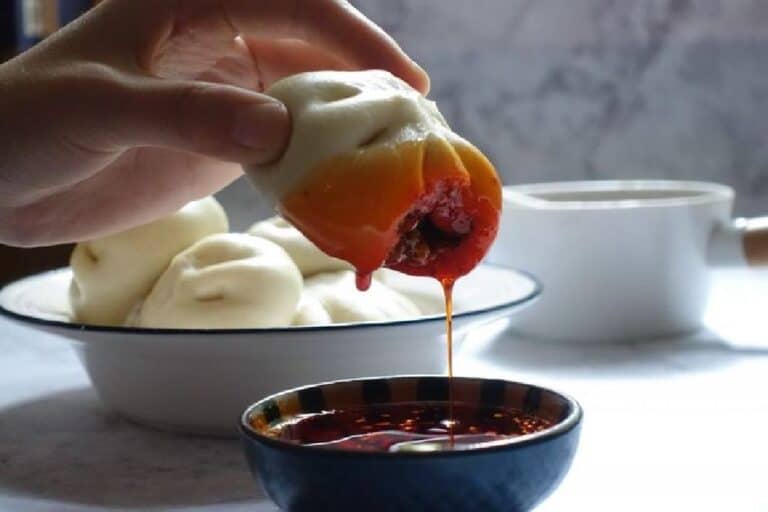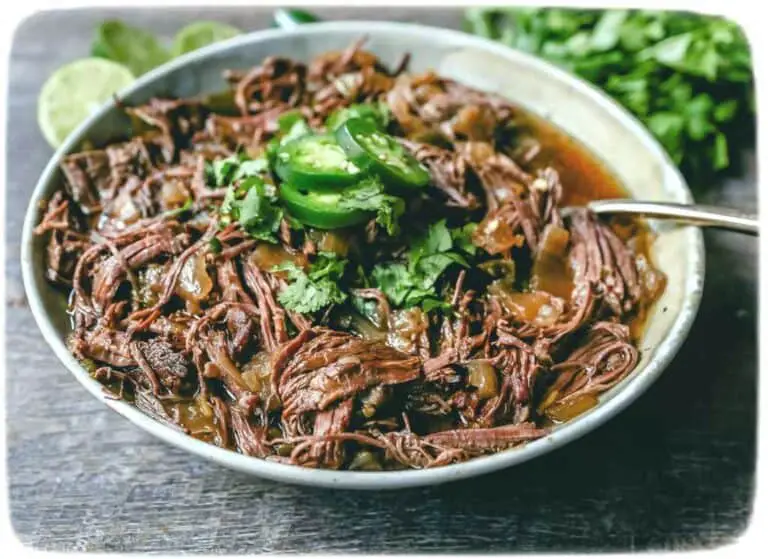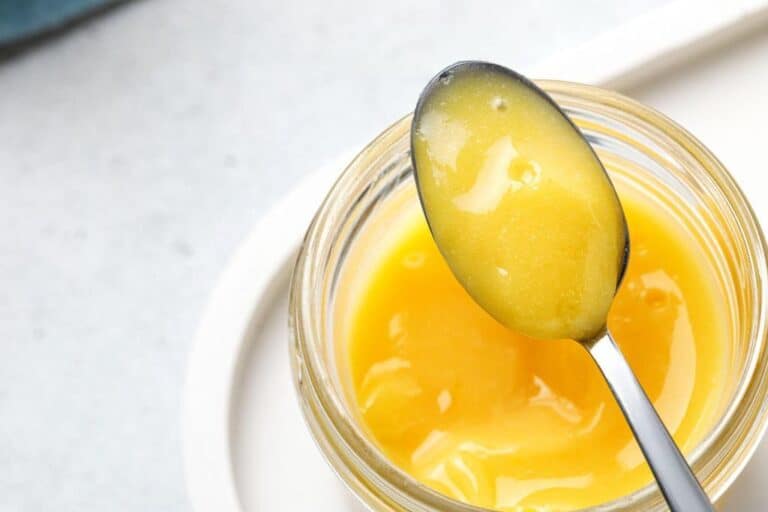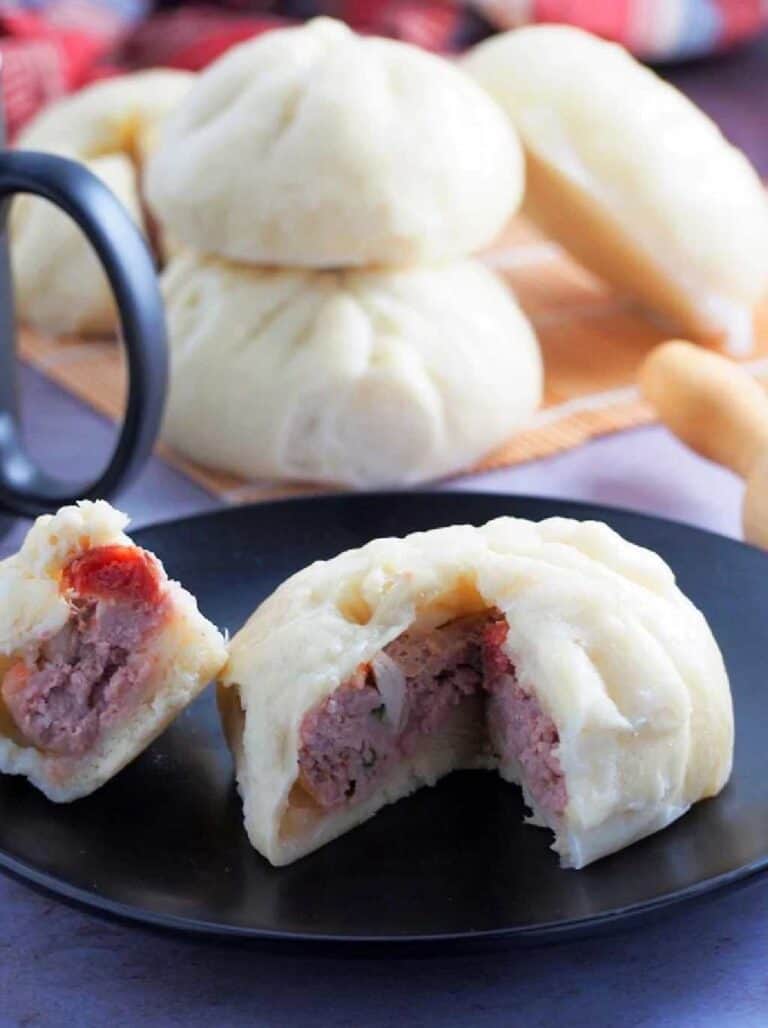How to Make Siopao Dough Without Yeast: Easy Guide
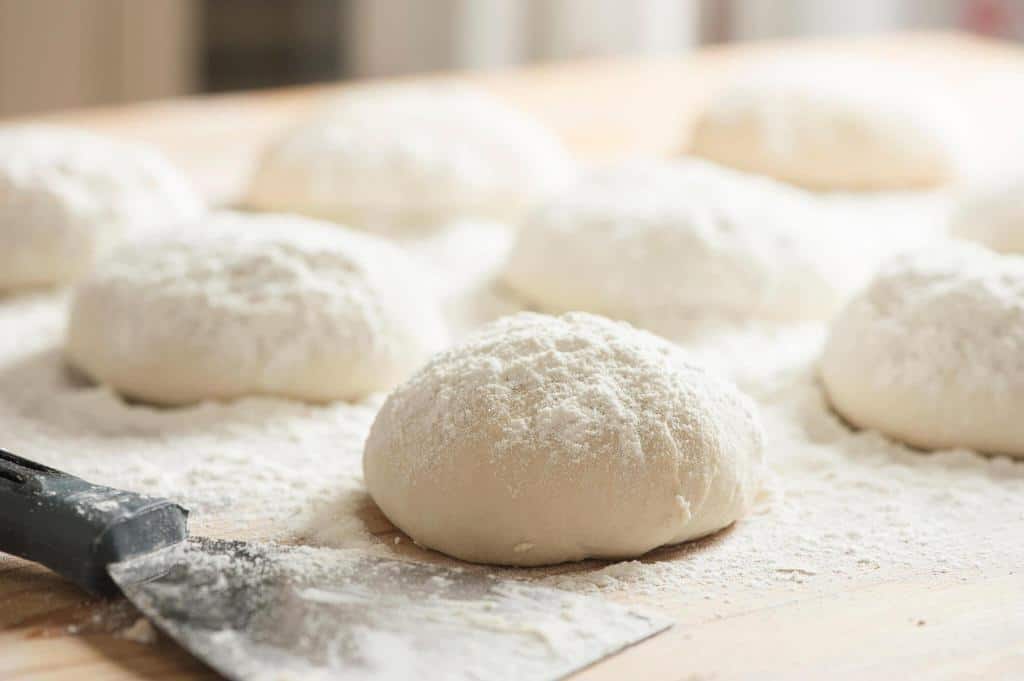
When it comes to Filipino cuisine, one cannot overlook the mouthwatering delights of siopao. These fluffy, steamed buns filled with savory meats or sweet fillings have captured the hearts and taste buds of many food enthusiasts. Traditionally, siopao dough is made using yeast as a leavening agent, giving it that iconic softness and airy texture.
However, what if you find yourself craving these delectable buns but don’t have yeast on hand? Or perhaps you simply prefer an alternative method?
In this article, we will explore a twist on the traditional siopao recipe. It uses a yeast-free dough with baking powder as the leavening agent. By using this method, you can achieve similar texture and taste. And, you won’t have to wait for the dough to rise.
Whether you’re a home cook looking to try new techniques or someone who needs to avoid yeast, join us. We’ll delve into the world of Siopao 2.0. Baking powder reigns supreme and makes pillowy-soft steamed buns that will leave your taste buds longing. Let’s get ready to satisfy our cravings together!
Benefits of Making Siopao Dough Without Yeast
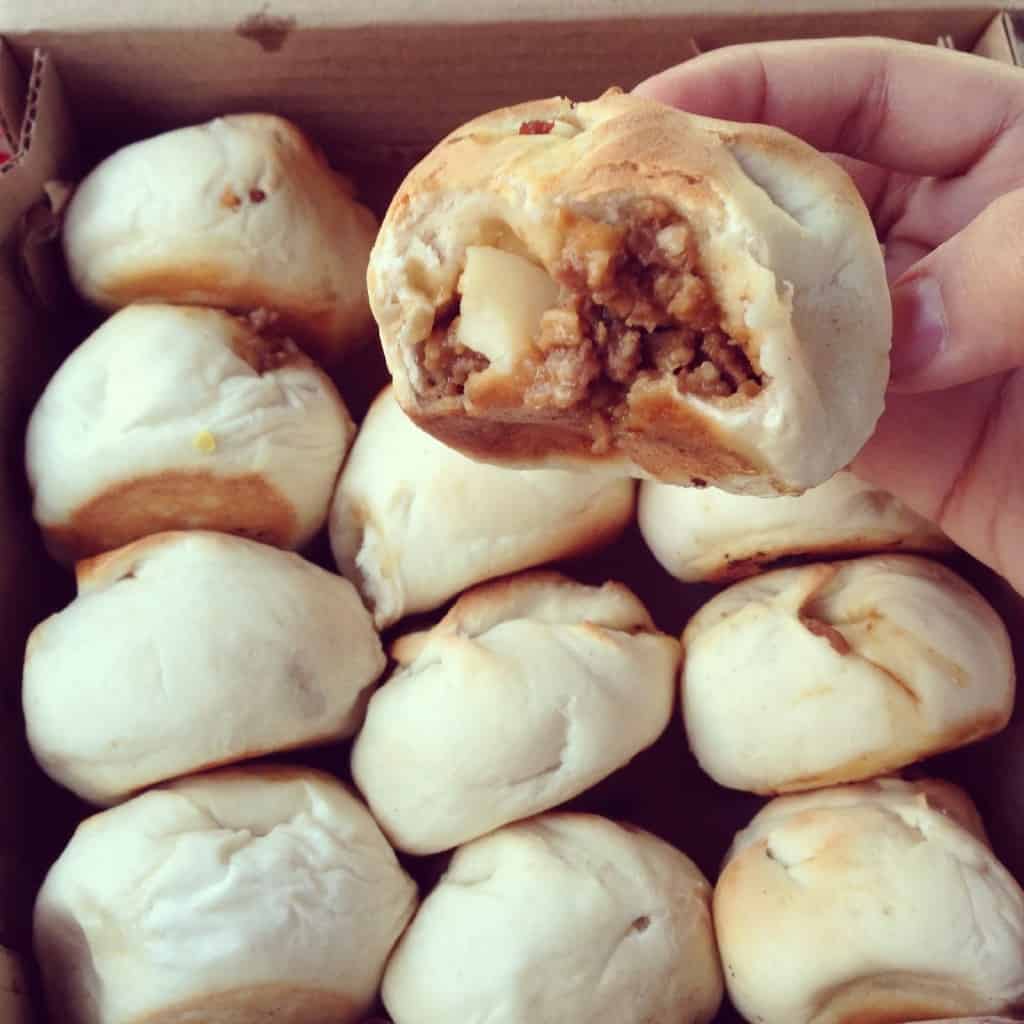
When it comes to making siopao dough, opting for a yeast-free recipe offers several enticing advantages. One of the main benefits is the convenience factor. Not everyone has yeast readily available in their pantry, and running out to buy some just for siopao might not always be feasible. By using a yeast-free alternative, you can enjoy freshly made siopao without having to worry about sourcing an ingredient that may not be on hand.
Another advantage of making siopao dough without yeast is the shorter preparation time. Traditional recipes often require proofing the yeast, which can take hours or even overnight. This waiting period can be frustrating if you’re pressed for time or simply eager to bite into these delectable steamed buns as soon as possible. With a yeast-free method, there’s no need for this lengthy process; you can mix up your dough and get right into shaping and filling your siopao.
If you avoid using yeast, you can bake without the restrictions of traditional methods. You can still get soft, fluffy results every time you make siopao dough. So, whether you’re short on time or lack yeast, rest assured. Without yeast, you can still make siopaos quickly!
Read: What Is the Difference Between Siopao Asado and Bola Bola?
Ingredients and Substitutions
To make siopao dough without yeast, you’ll need a few basic ingredients that are likely already in your pantry. The main ingredient is flour, which provides the structure and texture of the dough. All-purpose flour is commonly used in siopao recipes, as it gives a light and fluffy result. .
However, if you don’t have all-purpose flour on hand, you can use self-rising flour instead. Just keep in mind that self-rising flour has baking powder and salt mixed in. So, adjust the amount of extra leavening agents accordingly.
Next on the list is sugar, which adds a touch of sweetness to balance out the savory filling. You can use regular granulated white sugar for this purpose.You can use coconut sugar or honey instead. They are healthier and have different flavors. These natural sweeteners will add some depth to your siopao dough while still maintaining its desired consistency.
Salt is another important component of siopao dough, as it enhances the overall flavor profile. Regular table salt works well for this recipe, but feel free to use sea salt or kosher salt if preferred. While these variations won’t drastically affect how the dough rises or bakes, they may subtly alter its taste.
When substituting ingredients in any recipe, you must consider their properties. You must consider their effects on the final product.
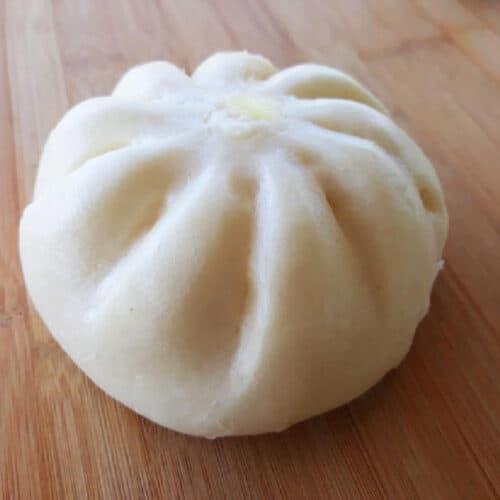
How to Make Siopao Dough Without Yeast
Ingredients
- 3 cups all-purpose flour
- 1 tablespoon baking powder
- 1/4 cup sugar
- 1/2 teaspoon salt
- 1/4 cup vegetable oil
- 1 cup water
Instructions
- Mix Dry Ingredients: In a large bowl, combine the flour, baking powder, sugar, and salt. Mix well to ensure the ingredients are evenly distributed.
- Add Wet Ingredients: Gradually add the vegetable oil and water to the dry ingredients. Mix until a dough forms. You may need to adjust the amount of water depending on the consistency of the dough.
- Knead the Dough: Transfer the dough to a lightly floured surface and knead it for about 5-7 minutes, or until it becomes smooth and elastic.
- Rest the Dough: Place the dough back in the bowl and cover it with a damp cloth. Let it rest for 10-15 minutes to allow the gluten to relax.
- Divide the Dough: After resting, divide the dough into smaller pieces, depending on the size of siopao you want to make.
- Shape the Dough: Flatten each piece of dough into a circle and place a spoonful of your desired filling in the center. Pinch the edges together to seal the filling inside.
- Steam the Siopao: Arrange the siopao on a steamer basket lined with parchment paper. Steam them for 15-20 minutes, or until the dough is cooked through.
- Serve: Remove the siopao from the steamer and serve them hot. Enjoy!
Tips and Troubleshooting
Proper kneading techniques play a crucial role in achieving the perfect siopao dough without yeast. Consistency is key when it comes to kneading, as the dough should be soft, smooth, and elastic. To achieve this desired consistency, start by adding small amounts of water or flour as needed during the process.
Knead for about 10-15 minutes until the dough becomes pliable and doesn’t stick to your hands or work surface. If the dough feels too dry or tough while kneading, sprinkle a little bit of water at a time until it becomes more manageable.
Resting time is another important factor in ensuring fluffy and tender siopao buns. After kneading the dough thoroughly, allow it to rest for at least an hour before shaping into individual buns.
This rest period allows the gluten in the dough to relax and develop. It makes the buns softer and lighter when steamed. Make sure to cover the rested dough with a clean kitchen towel or plastic wrap to prevent it from drying out.
When it’s time to steam your siopao buns, there are a few guidelines that can help you achieve optimal results. The steaming time will depend on factors, such as bun size and thickness. But, most recipes recommend steaming for 20-25 minutes over medium heat.
You must keep a steady steam while cooking. Do this by having enough water in your steamer pot. But, don’t have so much that it boils over onto your buns. Also, resist any urge to open the steamer lid early. This may cause uneven cooking or deflate your perfectly risen siopao.
Remember these tips. Use proper kneading, resting, and steaming. They are key to yeast-free siopao. With practice and attention to detail, you’ll soon be delighting yourself and others with fluffy batch after fluffy batch of these delectable Filipino steamed buns.
Serving Suggestions and Variations:
When it comes to serving siopao, the possibilities are endless. Traditional fillings, like pork asado and chicken adobo, are crowd favorites. But, there is plenty of room for creative exploration. For those who prefer a meatless option, vegetarian fillings such as sautéed mushrooms or tofu can be just as satisfying. These alternatives offer a delightful texture and a unique flavor profile that will surely impress.
To make your siopao experience better, add tasty condiments or side dishes next to your steamed buns. Banana ketchup is a common condiment in many Filipino households. It’s a sweet and tangy sauce made with bananas, sugar, vinegar, and spices. Its vibrant color adds visual appeal to any plate while providing a burst of flavors that complement the savory taste of siopao.
For those seeking an extra kick in their siopao experience, soy sauce mixed with calamansi juice or vinegar makes a great dipping sauce. This tangy combination enhances the flavors of the filling without overpowering them.
As for accompaniments, serve your piping hot siopao alongside pickled vegetables, pickled eggs, or atchara—a Filipino relish made from shredded green papaya marinated in vinegar, sugar, salt, and various aromatic spices. The crispness and slight acidity of these sides provide a refreshing contrast to every bite of fluffy steamed bun.
Conclusion
You can make siopao dough without yeast. Just use baking powder instead. This gives you a quick and easy method. This recipe allows you to skip the time-consuming process of waiting for dough to rise by utilizing the instant leavening power of baking powder. Whether you’re short on time or simply don’t have yeast on hand, this technique ensures that homemade siopao is still within reach.
So why not give it a try? Embrace the versatility of making siopao dough without yeast and discover a new way to indulge in this beloved Filipino delicacy. Try different fillings. Be creative with flavors. Tailor each batch to your taste. With a few adjustments and swaps, you can make fluffy siopao buns. They are as tasty as the traditional yeasted ones.
Say goodbye to limits. Embrace the freedom of exploring new cooking methods. Don’t let the lack of yeast hinder your culinary adventures. Instead, see it as an opportunity for innovation. You can adapt to create mouthwatering siopao from scratch.

